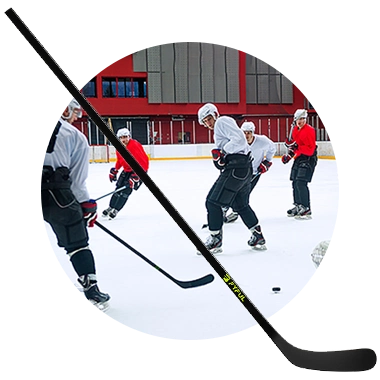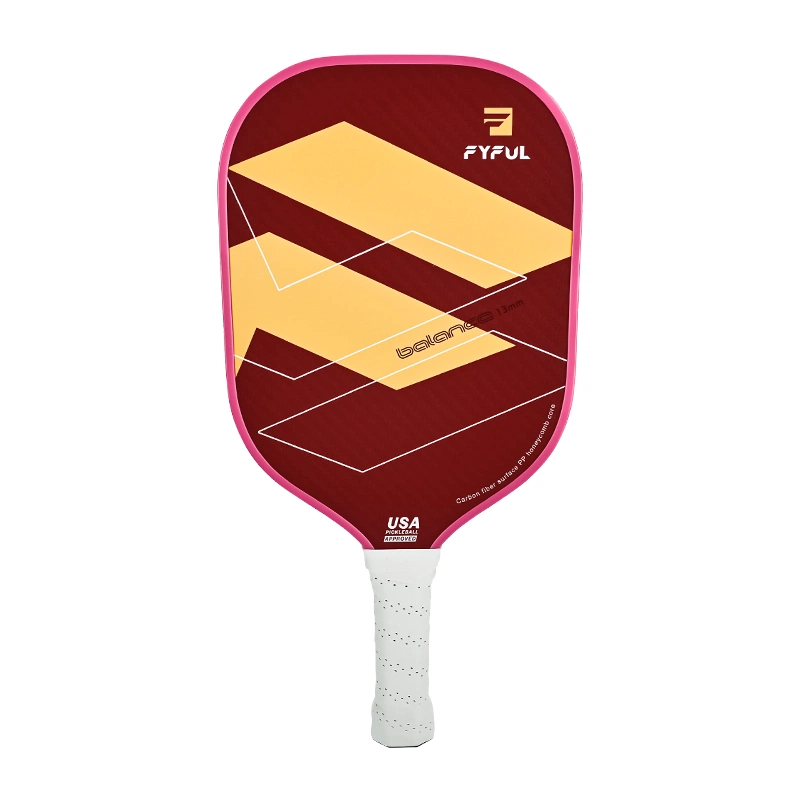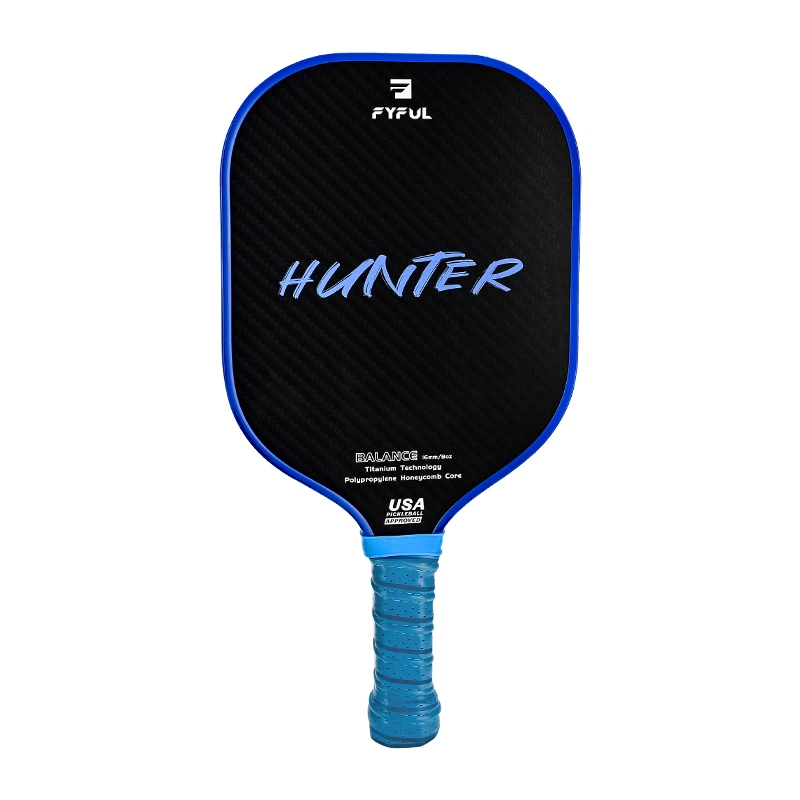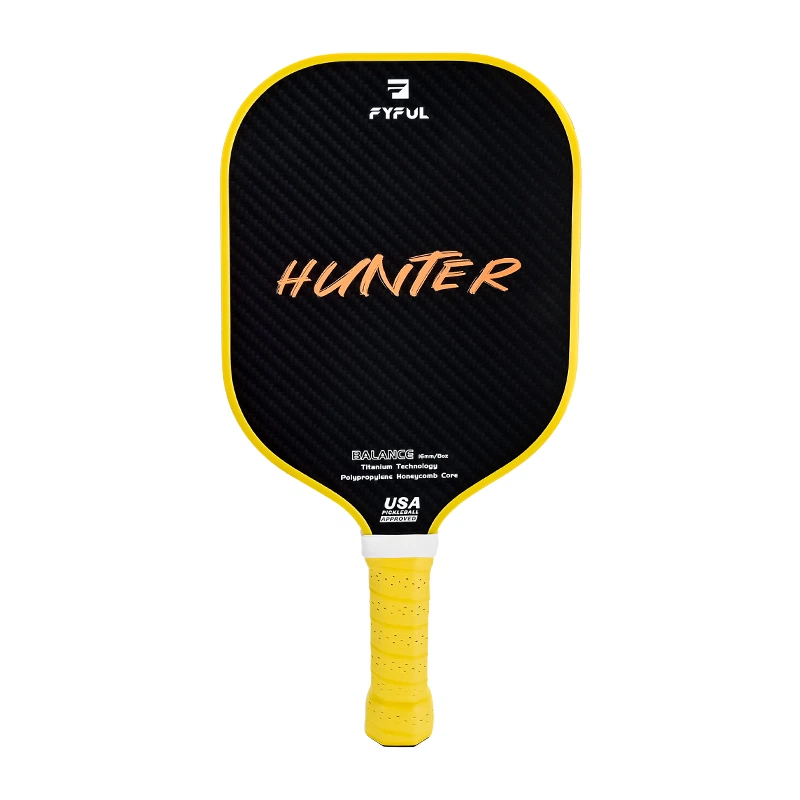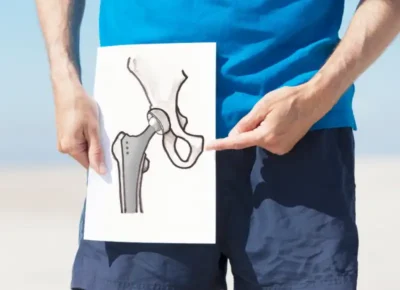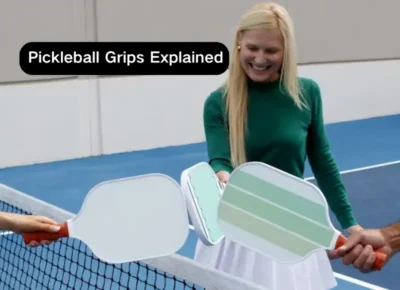Table of Contents
There is nothing more important for a pickleball player than his gear. As players flock to courts in parks, recreation centers, and even dedicated pickleball facilities, the importance of proper equipment care cannot be overstated. Among the essential gear, the pickleball paddle stands out as a crucial tool for players of all skill levels. Just as with any sporting equipment, maintaining your pickleball paddle is essential for optimal performance and longevity. The average life of the paddle could be one to five years. The plastic used on the edge guard of the paddles could start deteriorating after this time. So, it is vital to remove any grime or dirt present on the paddle. In this article, we are going to talk about how to clean your pickleball paddle. We are going to discuss a few methods to clean pickleball paddles.
Products for Cleaning Pickleball Paddle
There are various paddle cleaners available on the market formulated specifically for pickleball paddles. These cleaners are designed to remove dirt, sweat, and other debris without damaging the paddle’s surface.
Magic Erasers
Magic Eraser, or similar melamine foam cleaning pads, can be effective for removing tough stains or scuff marks from textured hitting surfaces. Use them sparingly and test them in a small area first to ensure they don’t damage the paddle’s finish. They are useful in cleaning textured paddle surfaces as well.

Household Cleaners
For a gentler cleaning option, mix water with a small amount of mild soap, such as dish soap or hand soap. Dampen a cloth with the solution and use it to wipe down the paddle surface, then rinse with water and dry it with a soft cloth. Baking Soda acts as a detergent and removes dirt. It is mixed with warm water to accumulate dirt. Gently scrub to remove sticky residue.
You can clean the paddle face or textured surface with soaps and detergents. Detergents remove dirt and dead skin on the paddle. Simply rub them on the honeycomb core or carbon fiber cores to get a fresh look. Glass cleaner is another option for cleaning pickleball paddle. Household cleaners, like rubbing alcohol, also help you clean the court surface.
Microfiber Cloth
When it comes to how to clean carbon fiber pickleball paddle, a dry microfiber cloth is a handy tool. It’s a lint-free cloth. Its soft texture helps remove dirt and debris without scratching or damaging the paddle. It also cleans the paddle face and helps remove dust. So, effectively clean the paddle face with the help of a microfiber cloth and glass cleaner spray.
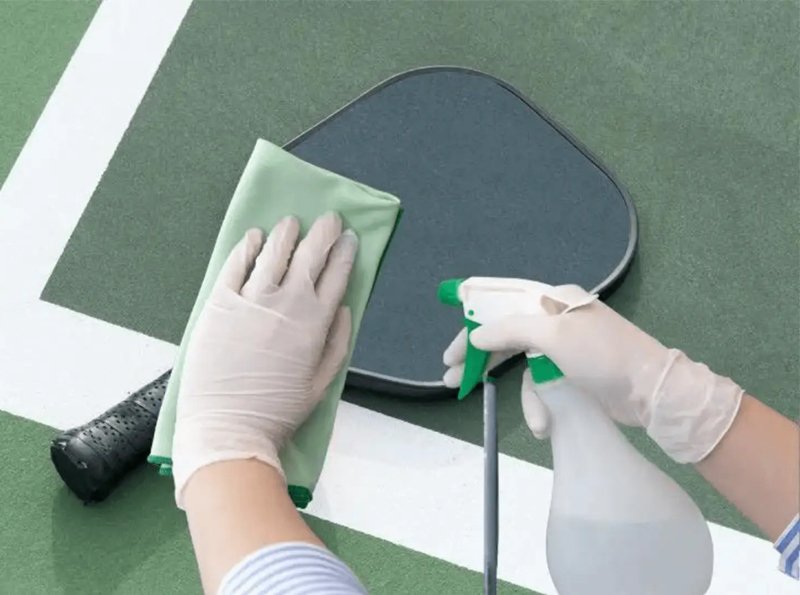
Source: https://pickleballopinion.com/
Steps to Clean Pickleball Paddles
Here are a few steps you need to take while cleaning your pickleball paddle:
Step 01: Gather Supplies
- Mild soap or paddle cleaner
- Soft cloth or sponge
- Water
- Towel for drying
Step 02: Prepare Cleaning Solution
- Fill a bowl or bucket with lukewarm water.
- Add a small amount of mild soap or paddle cleaner to the water. Avoid using harsh chemicals or abrasive cleaners, as they can damage the paddle surface.
Step 03: Wipe Down the Paddle
- Dip the soft cloth or sponge into the cleaning solution, ensuring it is damp but not soaking wet.
- Gently wipe down the entire surface of the pickleball paddle, paying particular attention to the paddle face and edges where dirt, sweat, and debris tend to accumulate.
- Use gentle, circular motions to lift away dirt and grime from the paddle surface.
Step 04: Rinse Thoroughly
- Once you’ve cleaned the paddle, rinse it thoroughly with clean water to remove any soap residue.
- You can either rinse the paddle under running water or wipe it down with a clean, damp cloth soaked in fresh water.
Step 05: Dry the Paddle
- Use a dry towel to pat the paddle dry, removing any excess water.
- Pay special attention to drying the paddle face and edges to prevent water spots or streaks from forming.
- Allow the paddle to air dry completely before storing it or using it again to prevent moisture buildup.
Step 06: Inspect for Damage
- While cleaning your pickleball paddle, take the opportunity to inspect it for any signs of damage, such as cracks, chips, or delamination.
- If you notice any structural issues or changes in the paddle’s performance, it may be time to consider repairing or replacing the paddle.
Step 07: Apply Protective Coating (Optional)
- If desired, you can apply a thin layer of paddle wax or sealant to the paddle surface to provide added protection against dirt, moisture, and UV damage.
- Follow the manufacturer’s instructions carefully when applying any protective coatings to ensure optimal results.
Step 08: Store Properly
- Once the pickleball paddle is clean and dry, store it in a cool, dry place away from direct sunlight and moisture.
- Consider using a paddle cover or case to provide additional protection against scratches, dings, and other damage during storage and transportation.
Tips on How to Clean Pickleball Paddle
Here are a few tips to use while taking care of your paddle:
Wipe Down After Each Use:
After each use, wipe down your paddle face with a damp cloth to remove any dirt, sweat, or debris. This prevents buildup that can affect performance.
Avoid Extreme Temperatures
Prolonged exposure to extreme heat or cold can damage the materials of your paddle. Avoid leaving it in the trunk of your car on hot days or in freezing temperatures.
Prevent Moisture Damage
Most pickleball paddles are typically made to withstand some moisture, so it’s best to avoid leaving them in damp environments for extended periods. If your paddle does get wet, wipe it dry immediately.
Check for Wear and Tear
Periodically check your paddle for any signs of wear and tear, such as cracks, dents, or loose grips. Address any issues promptly to prevent further damage.
Rotate Paddles During Play
If you have multiple paddles, consider rotating them during play to distribute wear evenly. This can prolong the lifespan of each paddle.
Clean Your Grip Regularly
Pickleball paddle grip is as important as the hitting surface of the paddle. Regularly cleaning your pickleball paddle grip is essential for maintaining a secure and comfortable hold during gameplay. Use a lint free cloth with mild soap to wipe away dirt, sweat, and oils that can accumulate on the grip surface. Keep your paddle clean with any paddle eraser to keep it in good condition for longer periods.
Rinse the grip thoroughly with water and allow it to air dry completely before using it again. This simple maintenance routine helps extend the lifespan of your grip and ensures optimal performance on the court.
Replace Grip as Needed
Replacing your pickleball grip is crucial for maintaining optimal performance and comfort during gameplay. Over time, grips can wear down, become slick, or lose their cushioning, leading to decreased control and increased risk of injury. It is one of the best practices to keep your pickleball paddle clean.
When you notice signs of wear, such as peeling, fraying, or a loss of tackiness, it’s time to replace the grip. Choose a high-quality replacement grip that suits your preferences for texture and thickness, ensuring a secure and comfortable hold on your paddle.
Regularly replacing your grip helps maintain consistency in your game and prolongs the lifespan of your paddle.
Handle with Care
Use your paddle cover only for its intended purpose. Avoid using it to hit the ground or other hard surfaces, as this can cause damage. Bring your pickleball paddle inside after the game if you’re playing outside.
When transporting your paddle, handle it carefully to avoid unnecessary impact or stress on the materials and increase the paddle’s lifespan.
Store Properly
Proper storage is essential for preserving your pickleball paddle’s performance and longevity. Avoid leaving it in extreme temperatures, such as in a hot car or a freezing garage, as this can damage the materials. Keep it away from a dirty place to avoid more dirt on it.
Instead, store it in a protective case or cover to shield it from dust, moisture, and accidental impact. Keep your paddle in a dry, temperate environment, away from direct sunlight and humidity. By storing your paddle carefully, you can ensure it remains in top condition for many games to come.
How Long Should You Wait Before Using a Pickleball Paddle After Cleaning It?
After regular cleaning pickleball paddle, it’s important to allow sufficient time for it to dry completely before using it again. The drying time can vary depending on the cleaning method used and the extent of moisture applied.
Typically, allowing the paddle to air dry for at least 30 minutes to an hour is recommended. However, if you used a damp cloth or cleaning solution, ensure the surface is completely dry to the touch before resuming play to prevent any adverse effects on grip or performance.
How Long Do Pickleball Paddles Last?
The longevity of a pickleball paddle depends on various factors, such as frequency of use, maintenance, and quality of materials. On average, a well-maintained pickleball paddle can last anywhere from several months to a few years.
High-quality pickleball paddles made from durable materials tend to have a longer lifespan compared to lower-quality options. Regular care and proper storage can also extend the paddle’s lifespan.
Conclusion
Caring for your pickleball paddle is essential for maintaining its performance, durability, and your overall enjoyment of the game. By following proper cleaning and storage practices, as well as knowing when to replace grips and other components, you can ensure that your paddle remains a reliable tool on the court.
Remember, a well-maintained pickleball paddle not only enhances your gameplay but also contributes to the longevity of your equipment investment. So, take the time to care for your paddle properly, and it will continue to serve you well for countless matches to come.



